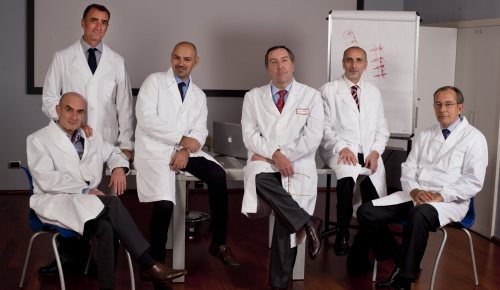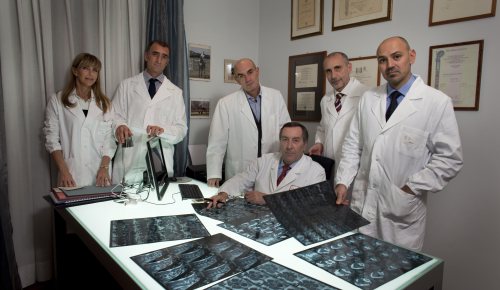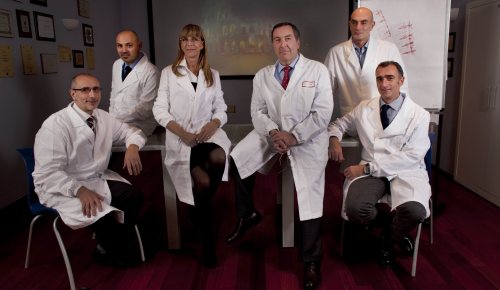The typical trigeminal neuralgia has an annual incidence of 3.4 cases per 100,000 men and 5.9 per 100,000 women. The onset is usually after the age of 40. The pain is most frequent on the right side of the face and affects the average or lower part of the face, the less often the upper part around the eye. Patients with typical trigeminal neuralgia have perhaps one of the most devastating pain that nature can produce: attacks usually last very little, can be repeated several times in the day, even at night; are characterized by a excruciating pain, stab type, or electric shock. The intensity of the pain is extreme. The subject, through time, becomes absolutely conditioned by his pain, do not feed more and do not care of the cleaning of his face and teeth. This is because there are cutaneous points, said trigger zones, whose contact or even slight stimulation triggers the pain. The trigger zones are located around the nose, between the nose and upper lip, at the level of the teeth. Even a breath of air, the contact of the face with water of different temperature, chewing, talking, swallowing, sneezing can trigger an attack of excruciating pain.
Finished the crisis, the pain disappears completely or it may remain a milder algia, deep, and disturbing. The patients live in constant fear of hitting a new ruinous crisis of pain.
Medical treatment is usually effective in the early onset of the crisis, but it may not control them on an ongoing basis.
The surgery arises at this point as the only possible alternative: a variety of methods has been proposed to alleviate or cure trigeminal neuralgia. With the microsurgical operation of “microneurovascular decompression” it is possible to eliminate the causative agent of the problem and that is the effect of “throbbing compression ” of one or more anomalous vessels on the nerve.
The postoperative result is optimal in over 95% of cases of the “typical” form, the so-called “tic doloureux”. There are forms of trigeminal neuralgia from acoustic neuroma, meningioma or other expansive processes own or based close to the trigeminal nerve and that a low percentage of neuralgia is given by multiple sclerosis or other inflammatory diseases. In these cases is not detected the neuro-vascular compression as before described.
In the larger case studies are expected recurrences, early or late, after more than 10-15 years. These are likely to be induced by a reorganization of the neurovascular relationships.
The treatment of Trigeminal Neuralgia by Microvascular Decompression (MVD) of the nerve in the posterior cranial fossa offers the best guarantee of resolution of symptoms, compared to other forms of percutaneous surgical therapy, that can produce the so-called dysesthesia, linked to the destruction of the trigeminal fibers. If properly conducted, the microvascular surgical decompression (MVD) respects the sensory modalities of the trigeminal nerve, including that of the cornea.
For further information take a look to these recent articles :
References :
http://www.ncbi.nlm.nih.gov/pubmed/18193149
http://www.ncbi.nlm.nih.gov/pubmed/24431878
Attachments :




